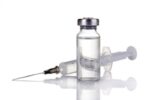Original title: Heparin monotherapy or bivalirudin during percutaneous coronary intervention in patients with non-ST-segment elevation acute coronary syndromes or stable ischemic heart disease: results from the Evaluation of Drug-Eluting Stents and Ischemic Events registry. Reference: Bangalore S et al. CircCardiovascInterv. 2014;Epub ahead of print. Bivalirudin compared to unfractionated heparin as monotherapy is associated with a lower risk of...
Decreased bleeding with radial access leaves little to bivalirudin for additional benefit
Original title: Bivalirudin or heparin in primary angioplasty performed through the transradial approach: results from a multicentre registry. Reference: Sciahbasi A et al. Eur Heart J: Acute Cardiovasc Care. Epub ahead of print. Bivalirudin benefit has been demonstrated in terms of bleeding; however when primary angioplasty is performed by radial access this information is not clear. To get...
Bivalirudin, effective in the pre-hospitalization phase of infarction
Original title: Bivalirudin Started during Emergency Transport for Primary PCI. Reference: Philippe G. Steg, et;al. NEJM 2013; Octubre 30:1-11 Primary PCI is the preferred treatment for AMI within the first 12 hours of symptom onset and outcomes have been improving with the incorporation of new strategies and technology. This study randomized 2218 STEMI patients started with bivalirudin during...
Low cardiac mortality with bivalirudin beyond the reduction in major bleeding
Original title: Reduction in Cardiac Mortality with Bivalirudin in Patients With and Without Major Bleeding: The HORIZONS-AMI Trial. Reference: Gregg W. Stone et al. J Am Coll Cardiol. Epub ahead of print The HORIZONS -AMI study included 3602 patients experiencing ST segment elevation myocardial infarction received primary angioplasty, resulting in lower mortality at 30 days and three years...
Transradial access plus bivalirudin, the best combination to reduce bleeding
Original title: Comparison of bivalirudin and radial access across a spectrum of preprocedural risk of bleeding in percutaneous coronary intervention: Analysis from the National Cardiovascular Data Registry. Reference: Baklanov DV et al. Circ Cardiovasc Interv. 2013, article in press. Bleeding complications are clearly associated to mortality increase and two of the current best strategies to reduce bleeding are...
Rational use of bivalirudin, less bleeding and less costs using risk score
Original title: Pre-Procedural Estimate of Individualized Bleeding Risk Impacts Physicians’ Utilization of Bivalirudin During Percutaneous Coronary Intervention. Reference: Seshu C. Rao et al. J Am Coll Cardiol 2013;61:1847–52 While safety of coronary angioplasty has improved over time, post-procedure bleeding is still frequent with a large variability between centers. Bleeding is associated with increased mortality, myocardial infarction, stroke, increased...
Bivalirudin reduces bleeding complications in carotid angioplasty
Original title: Hemorrhagic and ischemic outcomes after bivalirudin versus unfractionated heparin during carotid artery stenting: A propensity score analysis from the NCDR. Reference: Wayangankar SA et al. Circ Cardiovasc Interv. 2013;Epub ahead of print. Bivalirudin is a direct thrombin inhibitor that has shown similar efficacy with a better safety profile in the context of coronary angioplasty. However, its...
ESC 2023 | Anticoagulation After Primary PCI in STEMI Patients
The empirical prescription of anticoagulants after percutaneous coronary intervention (PCI), also know as post-procedural anticoagulation (PPA), is nowadays a common practice that uses various types of medications. Despite studies like HORIZONS-AMI and EUROMAX, in which 41% of patients received PPA, and the CCC-ACS registry, where 75% of subjects received PPA after primary PCI, European and...
Clinical Impact of Coronary Artery Disease on Results After TAVR
Coronary artery disease (CAD) coexists with aortic stenosis in about half the patients who suffer the latter. These patients receiving antiplatelet therapy are at a higher risk of periprocedural bleeding—one of the most frequent complications in patients who undergo transcatheter aortic valve replacement (TAVR). One way of limiting the risk for bleeding is choosing the...
TAVR and Anticoagulation: Direct Anticoagulant Agents or Vitamin K Inhibitors?
In some patients, using an anticoagulant agent is not an option, it is just prescribed. Based on the French TAVR registry, this research compared long-term mortality, bleeding, and ischemic events after valve implantation. A comparison was made between TAVR and direct vs. classic anticoagulant agents—good old proven and reversible vitamin K inhibitors. Cardiologists, hematologists, clinicians, and...









